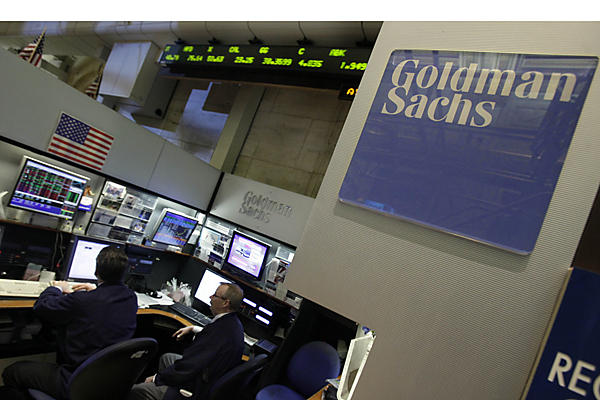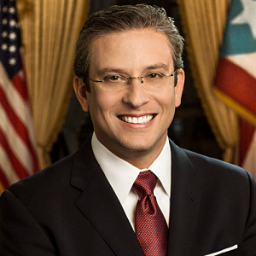|
Evidencing that financial reform is working, Goldman Sachs is changing its business model, but at the same time its sweetheart settlement collusion with the SEC gets new scrutiny: Hard to believe, but Goldman Sachs wants your saving and checking account business just like your local community bank. That’s because its former taxpayer subsidized business model as a high-flying, high risk global trading conglomerate can’t generate big revenues and bonuses like the old days. Post-crash financial rules — designed to prevent too-big-to-fail banks like Goldman from crashing the financial system and causing another Great Depression — are reducing the subsidies and forcing these banks to internalize the costs of the high risk gambling they used to externalize. Put differently, the days when too-big-to-fail banks could keep the upside of their bets and send taxpayers the bill for their losses are ending, slowly, but surely. That is most visible in the widely reported drop in trading revenues from fixed income, currency and commodities (FICC). Thus, the standalone investment bank business model is unsustainable as unsubsidized enterprises. That’s why Goldman is now trying to diversify its businesses and become more like a traditional commercial bank, with savings and checking accounts. But, Goldman’s attempt to move into the retail banking consumer space will require it to overcome two indelible images from its trading culture that prioritizes bonuses above all else: Rolling Stone’s unforgettable image of Goldman as a “vampire squid wrapped around the face of humanity” and its executives tortured Senate testimony justifying Goldman’s sale of a self-described “shitty deal” to its clients, referred to as “counterparties” who were perfectly fine to rip off. Inconveniently (for Goldman), this week also saw a flurry of reporting about another Goldman scandal. No, not the recent pathetic sweetheart settlement with the Department of Justice for selling, packaging and trading toxic subprime mortgages and derivatives that inflated the housing bubbly (which we previously discussed here). Rather, it related to Goldman’s sweetheart settlement deal with the SEC in 2010 and the subsequently reported collusion between the SEC and Goldman in deceiving the public.
But this week saw Pulitzer Prize winning reporter Jesse Eisinger writing in both The New Yorker and on the ProPublica website about this scandal: “Why the S.E.C. didn’t Hit Goldman Sachs Harder” and “Why Haven’t Bankers Been Punished? Just Read These Insider SEC Emails,” respectively. The piece draws heavily on the recollections of and documents and emails saved by a retired SEC lawyer named James Kidney, who had been assigned to the Goldman investigation and tasked with bringing the case to trial. Looking back on how events transpired, the piece concludes with an observation by Kidney that he “…still rues the Goldman case as a missed chance to learn the lessons of the financial crisis. ‘The answers to unasked questions are now lost to history as well as to law enforcement,’ he said. ‘It is a shame.'” Stephen Gangel, writing for Fortune magazine, picks up the Goldman-SEC story in early 2012, when ” the SEC enforcement lawyers believed they had uncovered evidence showing that Goldman had defrauded investors, misleading them into thinking a particularly toxic subprime $1.3 billion mortgage bond, Fremont Home Loan Trust 2006-e, was a safe bet.” Gandel offers a pretty damning assessment, writing, “Four years later, the Goldman SEC case-that-never-was is a black eye for the SEC and offers further proof that Wall Street’s chief regulator failed to do its job in the wake of the financial crisis.” As if two damning articles weren’t enough, The New York Times examined the broader implications of these pieces, stating, “The cases have been put to rest and cannot be revisited now. The S.E.C. does not have to explain why it chooses to drop a case or pass on charging potential defendants, but then it cannot object when the public draws its own inferences from a failure to act.” |
The SEC must act while Puerto Rico drowns in debt and congress delays: The Commonwealth of Puerto Rico is a financial ticking time bomb that will explode no later than July 1st when a $2 billion bond payment is due, which will almost certainly not be paid. Put simply, Puerto Rico is effectively bankrupt. However, while those financial issues dominate the headlines, they obscure a much larger crisis: a burgeoning human catastrophe as basic social services, including fighting the growing Zika epidemic, are being severely cut to pay interest on bonds, which now consume an astonishing 36% of Puerto Rico’s current budget. This is a serious problem and not just for Puerto Rico. The fiscal crisis and deteriorating services, combined with a bad economy creating too few jobs and growth, have sparked a mass exodus from Puerto Rico to the US. Zika will not be far behind. But because Puerto Rico is a Commonwealth rather than a state or municipality, it cannot simply file for bankruptcy and realign its revenues and debts in an orderly, fair and reasonable way. To enable this and prevent a social disaster, a paralyzed, hyper-partisan Congress must act quickly. Given gridlock, bondholder lobbying, and ideologues falsely waving the bloody shirt of “bailouts,” this essential action may not happen. But what can and should have already happened is a thorough investigation by the SEC into this municipal debt debacle, including in particular into the creation, packaging, selling and trading of Puerto Rico’s bonds. There have been numerous high-profile allegations of misconduct regarding the structuring, salesand trading of some of Puerto Rico’s bonds. The SEC is supposed to be in the investor and issuer protection business. It’s time for them to get to work. |
|
Six years after the stock market trillion dollar bungie jump, politely referred to as the “Flash Crash,” will the SEC finally let the CAT out of the bag? Almost six years to the day after the Flash Crash in May 2010, the Securities and Exchange Commission (SEC) finally released for public comment a plan for the creation of a consolidated audit trail (CAT). Six years! Today’s securities markets are moving at 21st Century speeds while the SEC is still too often in the 19th Century horse and buggy era. It remains shocking and inexcusable that the SEC lacks the basic data-gathering tools it needs to effectively protect investors and maintain fair and orderly securities markets. Technological advances, algorithmic and high-speed trading techniques, and the proliferation of separate trading venues have far outstripped the SEC’s ability to monitor or police the markets. The proposal is now under careful review and we will be looking to see if it offers answers to some fundamental questions:
|
|
The SEC’s Equity Market Structure Advisory Committee (EMSAC) meets to consider taking action on predatory and deficient market structure issues (maker-taker in particular), but succumbs to industry and fails to act – again: Advisory committees can sometimes serve a positive purpose, bringing a broad range of perspectives and expertise to the table. All too often, however, these committees prevent, delay, or weaken the development of rules that protect investors and improve market integrity. The SEC’s Equity Market Structure Advisory Committee (EMSAC), whose membership is dominated by industry participants who have a vested interest in the status quo, serves as the latest example.
However, while the outline of the pilot was discussed at the EMSAC meeting, no actual proposal was offered. There were several disagreements among participants around the table, and a further delay of the pilot was instead recommended. EMSAC’s charter expires in February and time is quickly ticking away. We hope that EMSAC will achieve its intended purpose and produce some meaningful proposals aimed at improving the structure of our financial markets for the benefit of both issuers and investors. Strong oversight and accountability of our financial markets in the public interest is too important to be stalled or undermined in this manner. However, the composition and conduct of EMSAC prioritizes industry interests over the public interest and there is ample basis to believe that it will achieve little more than delaying any meaningful action to protect investors and markets. |







 It’s most recent meeting, on April 26, 2016, was called to discuss a potential pilot program to examine simplifying the convoluted and highly questionable fee arrangements that have been created over the years, and possibly eliminating the practice of exchanges offering rebates to participants to channel trades through their systems. This is
It’s most recent meeting, on April 26, 2016, was called to discuss a potential pilot program to examine simplifying the convoluted and highly questionable fee arrangements that have been created over the years, and possibly eliminating the practice of exchanges offering rebates to participants to channel trades through their systems. This is 








